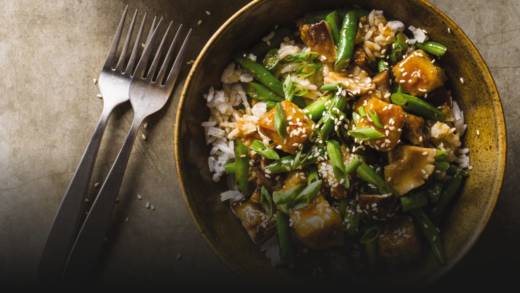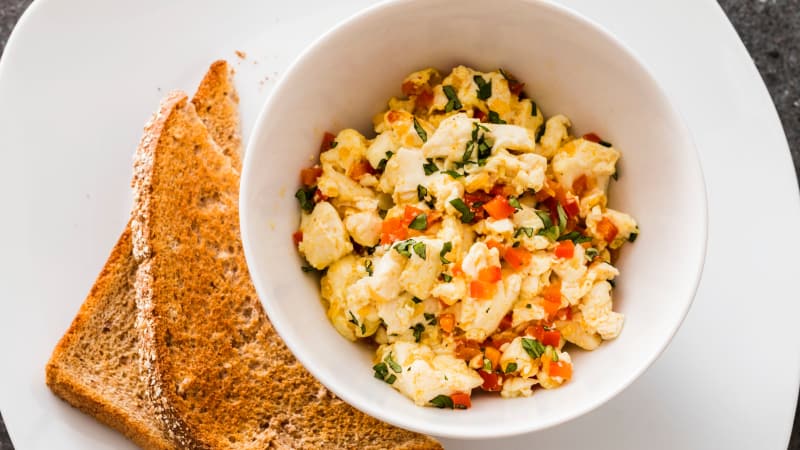We’ve heard it before: Tofu is bland and boring. If you’re of this mindset, you’re probably just not doing it right. (Note: tofu is not just for vegetarians and vegans. When seasoned and cooked properly, tofu can be as delicious as any other protein, and can display a range of meaty textures.) If you're not currently a tofu eater, keep an open mind: you might just end up loving the stuff.
A Beginner’s Guide to Eating and Shopping for Tofu

What Is Tofu, Exactly?
Tofu is the result of a process that’s similar to making cheese: Curds, made from coagulating soy milk, are set in a mold and pressed to extract as much, or as little, of the liquid whey as desired. Depending on how long the tofu is pressed and how much coagulant is used, the amount of whey released will vary, creating a range of textures from soft to firm. (We also developed a recipe in our D.I.Y. Cookbook for making tofu at home. Watch the how to video below.)
Supplies for Making Tofu
Dried Soybeans: As we've noted above, tofu is made from soybeans. This is your (obvious) starting point.
Nigari: Nigari is a salt naturally extracted from ocean water. It's used as a coagulant in the tofu making process. We prefer liquid nigari to dried nigari.
Colander: You'll need to use a colander twice when making your own tofu: while rinsing your soybeans, and while extracting the soy milk from the soybean pulp.
Cheesecloth: Once you've blended and cooked the soybeans, you'll need to remove the remaining fibrous bits from the milk. To do so, you'll need some cheesecloth. The pulp that remains (which is rich in fiber, calcium, and protein) is called okara—some chefs discard of it, while others add it to quick breads, stir-fries, or cold salads.
Tofu Mold: Finally, you'll need a mold to give your tofu shape (though you can also use a plastic, quart-sized strawberry container).
Wait, You’re Telling Me There Are Different Kinds of Tofu? What Should I Look for When Buying Tofu?
Great questions. To answer the first part: yes, there are different kinds of tofu. Tofu ranges in texture from silken to soft to medium-firm to firm to extra-firm. As for part two: the answer really depends on how you intend to cook your tofu.
We prefer firm to extra-firm tofu (our tastings and testings team conducted a rigorous taste test of firm tofu and determined that our favorite brand is Nasoya Firm Tofu, which you should be able to find in most supermarkets) for stir-fries and noodle dishes because they hold their shape in high-heat cooking applications and when tossed with noodles. Extra-firm is a bit more resilient than firm, though the two are often interchangeable. They’re also both great marinated, tossed into salads or onto bowls, or in various Asian soups. (Try our recipe for the Chinese takeout classic Hot and Sour Soup.)
Soft tofu boasts a creamy texture. We love to pan-fry soft tofu (often coated with cornstarch) to achieve a crisp exterior, which contrasts nicely with its silky interior. You can also use soft tofu as a substitute for scrambled eggs.
Before you scramble your tofu, you'll want to spread it onto a paper towel-lined baking sheet and let it drain for 20 minutes, patting it dry at the end. Crumble the tofu into 1/4- to 1/2-inch pieces—tofu can be crumbled into smaller or larger pieces to resemble egg curds of different sizes—and heat 1 1/2 teaspoons of vegetable oil in a skillet over medium heat until shimmering. Add whatever vegetables you'd like to the skillet (we recommend bell peppers and shallots) and cook for 5 minutes. Then add the tofu, and cook for 2 additional minutes. (Note: we find that adding a small amount of curry powder—no more than 1/4 of a teaspoon—contributes good depth of flavor without overpowering the scramble.) Add salt, pepper, and some fresh herbs and voila!, you've got yourself a delicious tofu scramble.

What Does Tofu Taste Like?
Tofu has a clean, nutty, subtly sweet flavor, and is an ideal canvas for bold or aromatic sauces. It also takes to a wide variety of preparations (as mentioned above). Tofu is a great choice for vegans because it’s high in protein, as well as being rich in iron and calcium.
How Do I Store Tofu?
Tofu is highly perishable and has the best flavor and texture when it’s fresh, so look for a package with the latest expiration date possible. To store an opened package, submerge the tofu in water in a covered container and refrigerate it, changing the water daily. If your tofu tastes sour, it’s past its prime.
This article originally appeared on America's Test Kitchen.
